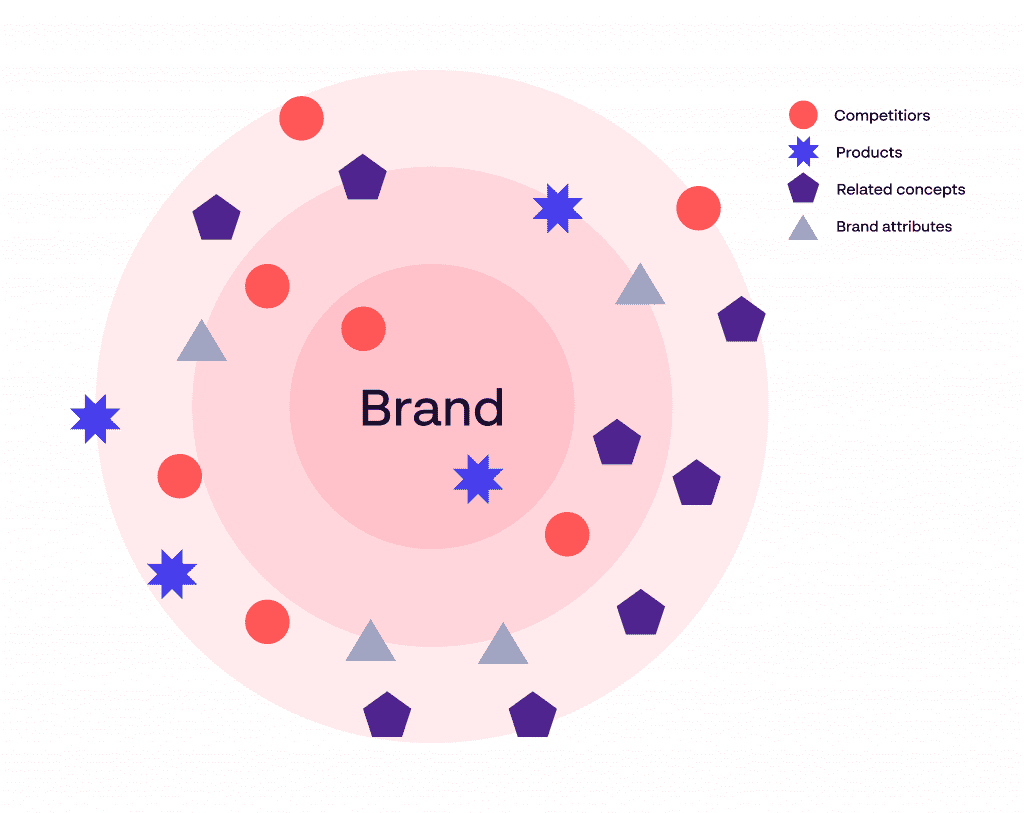Colour’s ability to persuade and influence the feelings of consumers has been a topic of fierce discussion through the years.
Since Angela Wright’s theories on colour psychology came to the forefront in the 1970s, there has been a tidal wave of information highlighting how colours are perceived, and why this should guide a brand’s chosen colour palette.
There is no question that colour is critical when it comes to building a brand. Research demonstrates that consumers form their immediate opinion of a brand or product within 90 seconds of seeing it, and up to 90% of that judgement is based on colour alone.
- Colour boosts people’s brand recognition by up to 80% (Source University of Loyola, Maryland)
- Colour influences up to 85% of shoppers’ purchase decisions ( Source Suresh Kumar)
- 81% of brands believe their colours give them a competitive advantage (Source Xerox)
And, there wouldn’t be this much discourse on colour psychology in marketing if these insights carried no weight whatsoever. At their core, different colours do evoke different emotions from us, as well as their brightness, hue and shade – and marketers should be aware of these.
But, is the current consensus on colour psychology all it’s cracked up to be? While basic principles do apply, variables such as culture, context and personal preference mean that marketers should be wary of completely buying into colour psychology.
We’ll explain here why you shouldn’t become a slave to the colour wheel, and what to keep in mind when crafting your unique colour palette.
Shattering perceptions: The nuance of colour psychology
There are 4 fundamental factors that need to be considered against these “universal” truths of colour psychology, in order to help ensure your brand colour palette is compiled with the right attention to detail:
- Experience
- Context
- Culture
- Individuality
Experience
What’s your favourite colour? Why is it your favourite?
Most people have a clear answer to this question. A colour that just clicks with them for whatever reason. Likewise, you probably have a colour or two that you just can’t stand, and wouldn’t want around you in any circumstances.
Unsurprisingly, this may play a big factor in the products you buy and the brands you form relationships with. We will naturally gravitate towards those bearing a colour that we like, and consciously avoid those with colours we find displeasing.
There’s nothing brands can do about this – it’s just an indicator that people’s attitudes towards colour can be highly subjective, so always take colour theory with a pinch of salt.
Context
While we may associate colours with particular thoughts and feelings today, that doesn’t mean we will always see them in this light. Attitudes towards colours can change significantly over time, placing them in an entirely different context.
A frequently cited example is that pink, commonly referred to as a feminine colour, was once perceived as a masculine shade due to it deriving from red. Subsequently, blue was viewed as the more feminine hue, linked to its association with The Virgin Mary.
This shows that context is crucial, and it’s vital that you don’t become too closely tied to “conventional” colour theories that you ignore any changes in the landscape around you.
Culture
Did you know that in China, red is a colour closely associated with luck and prosperity, while white is a mourning colour, rather than black?
And green is the colour representing love in Hindu culture, instead of the red we associate it with in the Western world.
You’d be forgiven for not considering these when reading some colour psychology guides online, as they are often deeply rooted in the Western perspective. But, as brands extend their reach further across the globe, they need to consider what their colours are projecting to their audiences, and whether this requires a rethink.
For example, when a US chewing gum company entered the Chinese market, their sales were initially very disappointing. The reason? The green wrapping paper they used. Green is a sacred colour in China, so they found more success when they switched the wrappers to be pink instead for this market.
Individuality
An important reason to cut through the lessons taught by colour psychology is one of the core principles of branding – being unique.
If every financial firm chose blue as their core colour, then that would be a pretty dull, uninspiring landscape. All it would take is for someone to add a splash of red or yellow, and they would immediately stand out from the crowd.
Don’t compromise your individuality by chaining yourself too closely to colour psychology guides. While they can offer a general frame of reference to guide you on forming your brand identity, you should recognise when to deviate from the blueprint in order to express the unique personality and values of your organisation.
Top 10 tips for building your brand colour palette
#1 What makes your brand special
First, consider your brand’s unique values and personality – what qualities and characteristics do you want to project through your colour palette?
#2 Refer back to a colour psychology guide
See what colours correlate to these particular values and emotions. While you shouldn’t stick to these rigidly, this can offer inspiration and a solid frame of reference.
#3 Ask your audience for their perspective
How do they want to feel in relation to your product and services? How do you want them to feel? Do they connect to any colours in particular in the other brands they use?
#4 Check out your competition to make sure you stand out
If there is a general trend of a particular colour across your competitiors, what can you do to set your organisation apart, while still expressing your company’s values?
#5 Choose how you want to present colour in branding
Do you lean towards a monochromatic style, pushing a single colour in various shades to push one particular message? Or would you prefer to mix things up with a complementary or triadic approach?
#6 Look over the latest colour trends
See if anything is in vogue moving forward. For instance, in 2021, muted colours and soft pastels are presenting brands as calmer and more reassuring, ideal for the strange time we find ourselves in.
#7 Stick to the 60-30-10 rule
This well-established design approach helps to balance out colours across your brand collateral, and can be an effective way to accentuate your brand’s primary colour.
#8 Collaborate with an expert
If you’re finding it hard to nail down your palette, consider working with an agency or dedicated design team. This expert, third-party collaboration can offer a fresh, outside perspective on what your brand stands for, and how your colours can best project that.
#9 Get feedback and refine
Once you have ideas for your colour palette, user test it as much as you can, both internally and externally. See which combination gets the best positive response from your colleagues and audiences.
#10 And finally…
Remember that there are no concrete rules to define what your brand colours should and shouldn’t be. Put your brand’s identity first, and use this and your research to guide your choices, rather than become too attached to colour psychology.
Exploring colour psychology: What do different colours mean?
While colour psychology shouldn’t be taken as gospel, it’s important to understand the emotions that each colour is said to inspire in the human psyche:
Blue
There’s a reason why blue is the colour most commonly featured in the logos of Fortune 500 companies – it is considered a beacon of reliability. It is the colour most closely associated with diligence, trust and calmness, which is why it is prioritised by many highly professional firms.
Red
Red is another popular colour featured in brand colour palettes, as it is a powerful attention grabber. The colour is closely associated with passion and energy, and its perceived ability to increase appetites mean it is readily employed in the restaurant industry. However, its association with danger and pain can also be seen as a turn-off.
Yellow
Many consider yellow an inspiration for warmth and positivity, as one of the brightest colours and its association to the sun. In this context it is meant to evoke optimism and happiness in consumers – yet it is also closely connected to warning signs and danger in certain circumstances…
Green
Green is a versatile colour. As the colour most closely connected to nature, many employ it as a sign of eco-friendliness, like McDonald’s employed in their rebrand across Europe. In other situations, it is noted for inspiring feelings of health, vitality and security.
Orange
Orange is tied to emotions of excitement, liveliness and dynamism. Because it doesn’t carry the same intensity as red shades, orange is often viewed as more playful and friendly, ideal for brands appealing to younger audiences.
Purple
Due to purple not being commonly seen in nature, it is often used to depict luxury and exclusiveness. Used throughout the years as a marker of wealth and status, brands employ this colour to illustrate a deeper level of quality and maturity across their offering.
Pink
The impression that pink provides is often associated with feelings of calmness, softness and care, quite far removed from the more in-your-face red shades. It has also in recent decades – rightly or wrongly – been considered a more feminine colour.
Brown
As an earthy colour, brown is often closely tied to nature, and the comfort and familiarity that this offers. While often not the most eye-catching colour, this natural reliability often leads to brown being harnessed by food brands.
Black
Black may be viewed as a polarising colour – stable and sophisticated to some, dark and unnerving to others. But it is a staple colour for many brands in one context or another, and is often considered an indicator of quality.
White
Whether it’s a wedding dress or snow falling down, white has always been closely connected to purity. The simplicity and clarity of this colour has made it a go-to for brand’s who want to project that their offering is simple and untainted.
As we noted earlier, colour is one of the key attention-grabbers behind a consumer’s decision to use a brand’s product or service. And the emotions inspired by the colours listed above are grounded in science – the way our brains take in visual information and interpret it naturally inspires some form of emotional response.
However, relying too closely to these perspectives on colour psychology when building your brand colour palette is a dangerous path to travel. While colour can encourage emotional responses, it isn’t a case of colours flipping a switch in customers’ minds – an impression that far too many colour psychology guides seem to present.
Plus, for as much as it is cited, colour psychology is not backed by a ton of qualitative research, and can sometimes clash with other interpretations.
The conflict surrounding yellow is a clear sign of this. While it is linked to the release of Serotonin in the brain, encouraging people to feel more optimistic and happy, other research links it to feelings of frustration and anger, judging by the belief babies cry more in yellow rooms.
Applying colour psychology appropriately
We hope this has given you a greater insight into brand colour psychology, from the emotions most closely associated with various colours, to why you should always take these studies with a pinch of salt.
One thing that is undeniable is the importance of colour in branding, and the impression this gives to consumers. While there are no hard-and-fast rules to how you choose to present your brand, your colours will go a long way in how people perceive and recall your brand.
So, do the research and trialling required to find the ideal colour(s) for your organisation, and apply these consistently throughout your branding.
Consistency is at the core of BAM by Papirfly™. Our platform’s customisable, intelligent templates enable you to lockdown on your defined colour palette, ensuring there is no chance of assets being created that go against your brand’s unique identity.
Discover the faster, simpler and more cost-effective way to own your brand like never before by arranging your demo today.



















